- Home
- Enclosure Ratings
- Enclosure Type
- Enclosure By Material
- Enclosure By Mount
- Traffic Control
- Applications
- Stock Enclosures
- Custom Fabrication
- About Us
- Contact Us
- Blog
- What Makes Bison Profab Unique?
- Bison Profab Upgrades Capabilities
- Our View On Diversification
- Bison ProFab Passes ISO 9001:2008 Quality Management System Re-certification
- Polyurethane Gasket VS Silicone Gasket
- Seamless Pour In-place Gaskets vs. Glued Strips
- MIG, TIG, and Heliarc Welding
- IP Protection Ratings vs. NEMA Equivalency
- The Evolution of Industrial Enclosures - Part II
- The Evolution of Industrial Enclosures - Part I
- Things You Should Know When Designing an Enclosure
- ATEX and IECEx Enclosures
- Frequently Asked Questions
- Careers
The Evolution of Industrial Enclosures - Part I
My internet marketing team and I were discussing potential subject matter for our blog column and the suggestion of “the evolution of industrial enclosures” came up.
This seemed like an intriguing concept so I began some limited research. I did a Google search for “when was the first box made” and found out that the first commercial paperboard boxes originated in England in 1817. Not exactly what I was looking for.
The First Enclosure
My next search was “when was the first enclosure made”. I pulled up a Wikipedia article that stated “enclosure” was an agriculture term which implied creating boundaries on land; such as planting a hedge or building fences. Without going into the many varied details, “enclosure” is considered one of the causes of the British Agricultural Revolution. Farmers that employed enclosed land typically adopted better farming practices – and were more profitable. While the crop yields and livestock output increased, labor productivity increased enough to create a “labor surplus”. This increased labor surplus is considered one of the causes of the Industrial Revolution. The Industrial Revolution was the transition to new manufacturing processes in the period from around 1760 to sometime between 1820 and 1840. This period generated developments in steam power, textile manufacturing, mining, machine tools, glass making and gas lighting – just to name a few. Thus, it is my completely unsubstantiated opinion that the Industrial Revolution eventually created the need for the “industrial enclosure
From an Industrial Standpoint
At any rate, boxes/enclosures with doors on them have been around for a very long time – the basic design hasn’t changed much. From an industrial use standpoint, steel was and continues to be one of the most prevalent materials used for enclosure fabrication. However, stainless steel, aluminum and even molded polycarbonate have gained in popularity over the past few decades. Informed buyer’s are now specifying fabrication materials and finishes that will provide the best protection, performance and longevity for their particular application. Knowledgeable vendors, such as the account managers and engineers at Bison ProFab, can answer questions, assist with design issues and provide solutions for your enclosure requirements.
A Sophisticated Evolution
While the outward appearance of an enclosure hasn’t evolved significantly, its purpose and how it’s manufactured has changed substantially. Many years ago, we put boxes around items because we wanted to keep them secure – or we wanted to protect people from what was inside the box, such as moving parts or electrical devices. Although those are still critical aspects, our concerns for what we are enclosing have become more sophisticated, along with the methods and equipment we use to fabricate the enclosures. More on this in my next blog post

